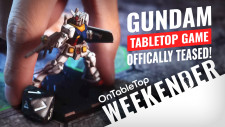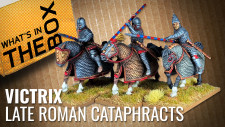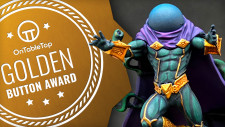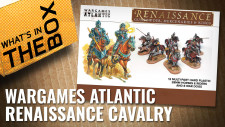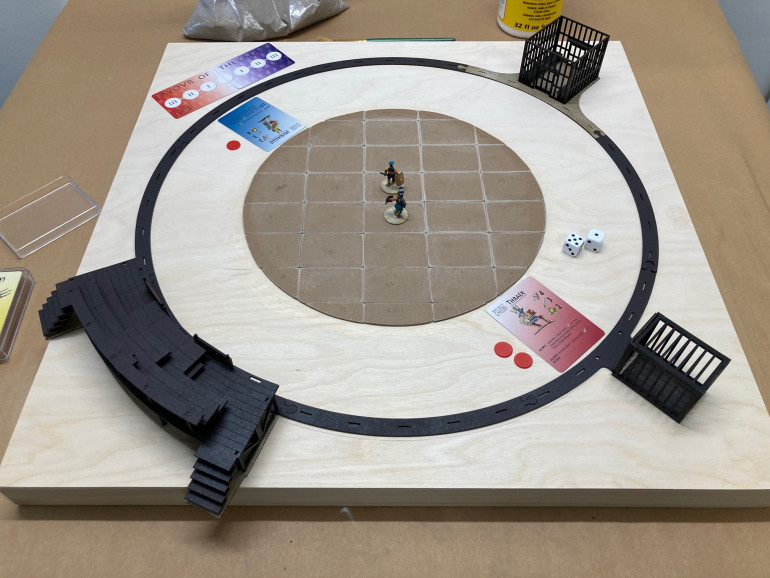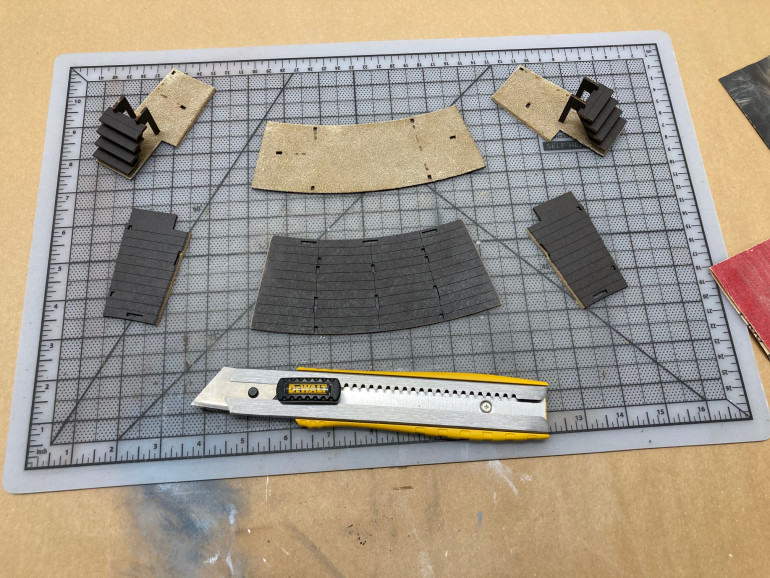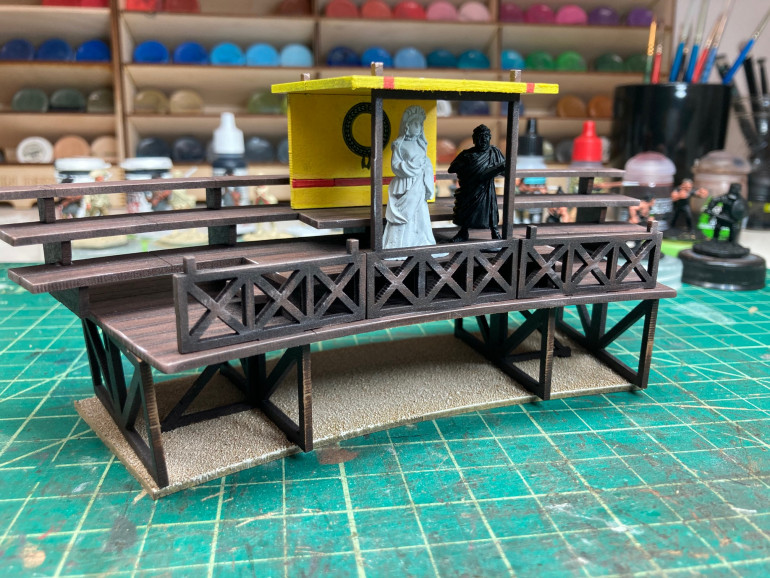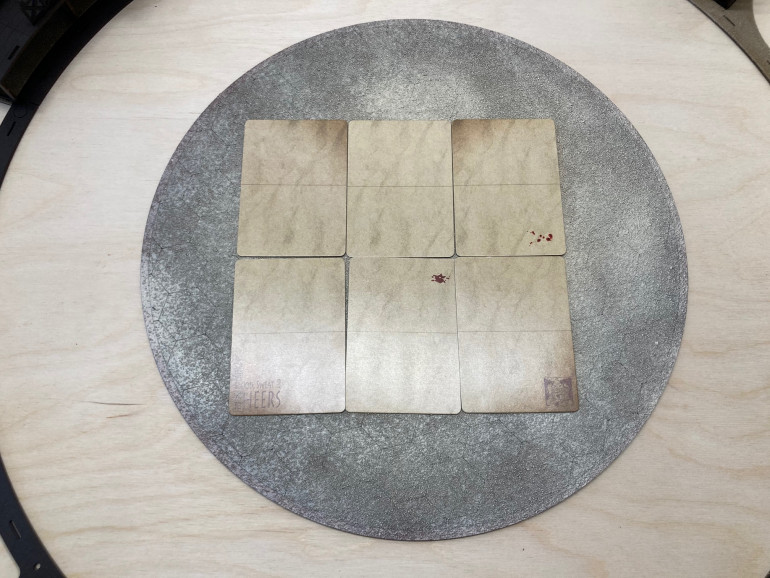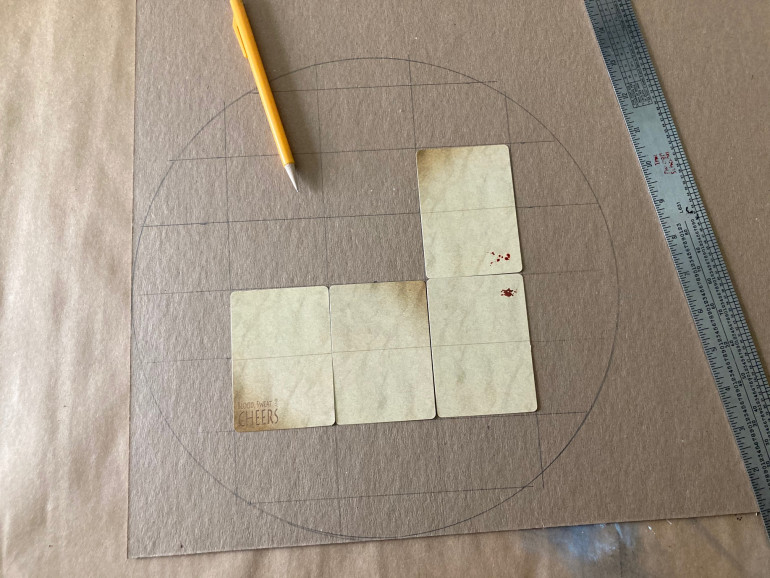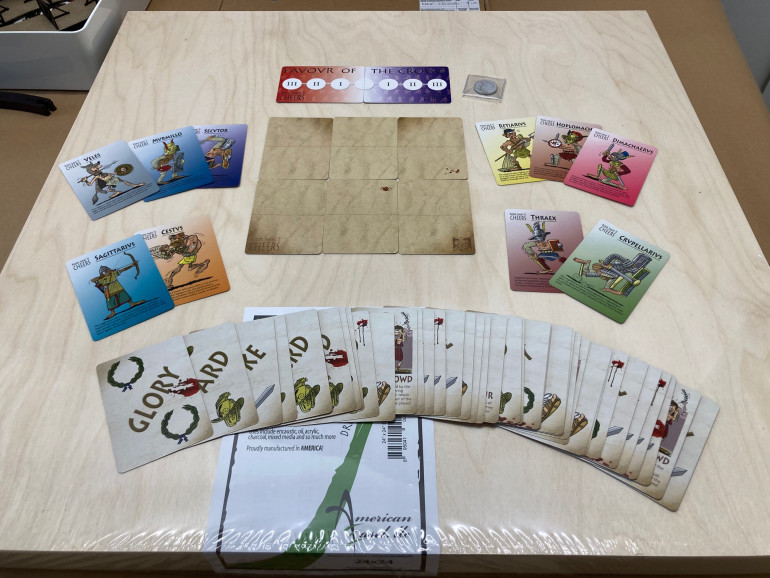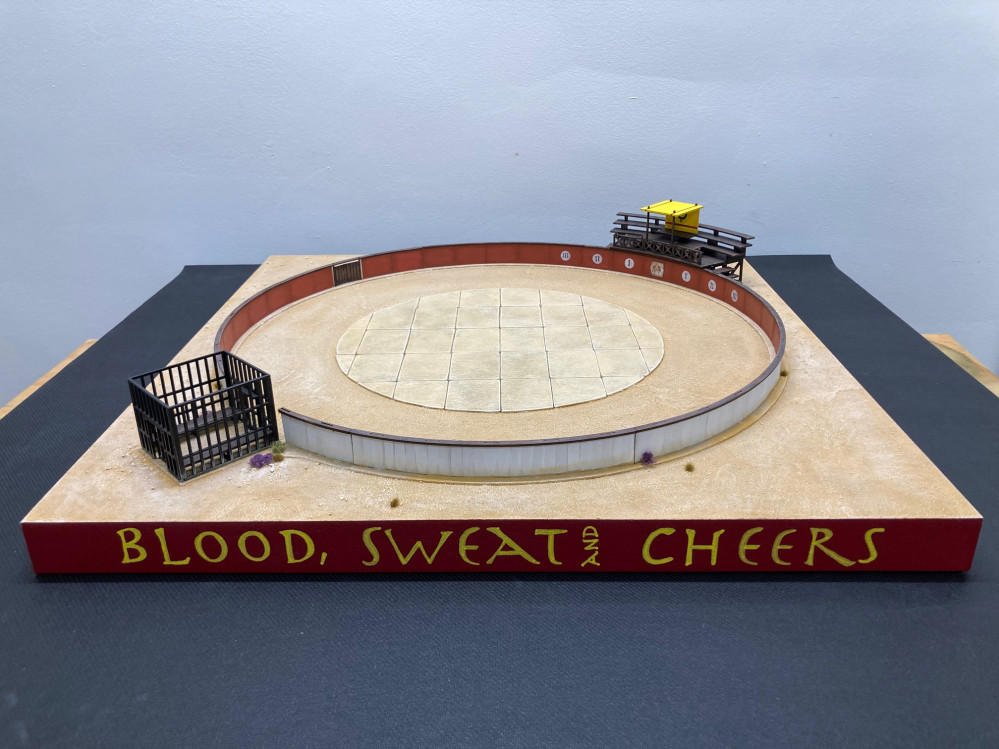
Sanguis, Sudore et Iubentium
Recommendations: 601
About the Project
In 2016 I bought the card game Blood, Sweat and Cheers from Ganesha Games. I ordered a Ludus from Sarissa Precision and a few 28mm Gladiator miniatures from Brigade Games. It then got lost in the project queue. Inspired by watching a Twitch stream of the Pixelart Gladiator Management Simulator Domina, I decided to complete it. The goal is to create a Ludus Game Board, paint minis and add new characters and scenarios to the game. Strength and Honor!
Related Genre: Historical
This Project is Active
Domina Domus
Salvēte,
After cutting out each zone, I sanded a bevel on all edges. I then glued them to the center of the board.
After dry fitting the Sarissa Ludus kits I noticed that I have room for the Character cards within the ring. However the Grandstand is to wide and in need of conversion. Break out the big hobby knife!
With that done next was a quick paint job. A bit of wood grain here and there and a vibrant yellow pulvinar. At this point we can begin to add a narrative to our Project log.
Enter Domina Atia Belba Callidus only child of the local Senator. Left to her own with endless coin at hand, she has embarked on a new hobby. Gladiators! Not having any experience on the matter she enrolled Marcus Flaccus, her fathers accountant. Now Lanista to Atias venture it’s up to him to see it prosper.
Strength and Honor!
Rectangulum ut Circulus
Working from the basic area made up of cards that comes with the game, I expanded the playable “squares” to form a circle. I am using 2mm Card. I will cut out each “square”, sand off the corners and glue it all together in the center of the Gameboard.
I will go from having 12 playable “squares” to 26!
Strength and Honor!
Blood, Sweat and Cheers - Intro
Salvēte,
Blood, Sweat and Cheers (published 2016, 2nd edition 2020) is a tactical, two-player, card and dice game from Ganesha Games, that recreates single combat between gladiators in the arenas of the Roman world from the mid-third century BC to the start of the fifth century AD. … Ten gladiator styles are represented.
Cards are used to abstractly represent the different options available to a player’s gladiator during the ebb and flow of a gladiatorial bout, while dice are used to resolve interactions. The watching crowd interacts with the gladiators in the arena by rewarding showy attacks and spilt blood with favourable cheering which may in turn be utilised to buoy up a gladiator’s performance.
Almost everything you need to play the game, including a basic area, is inluded in the deck. All players need to do is print the cards and rulebook and provide their own gladiators, dice, and a few wound tokens or markers.
Strength and Honor!
































